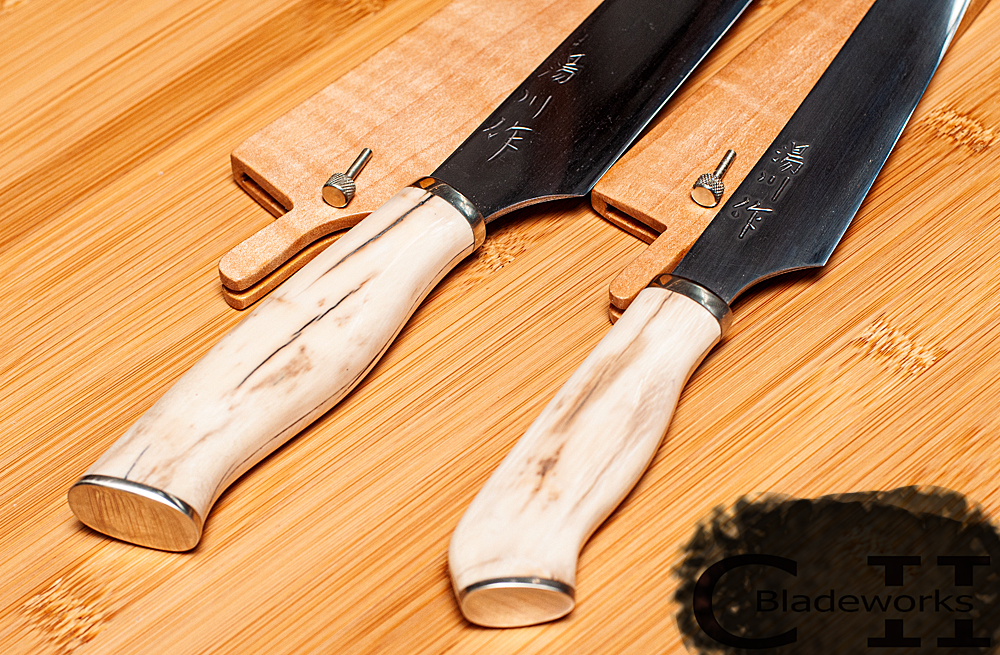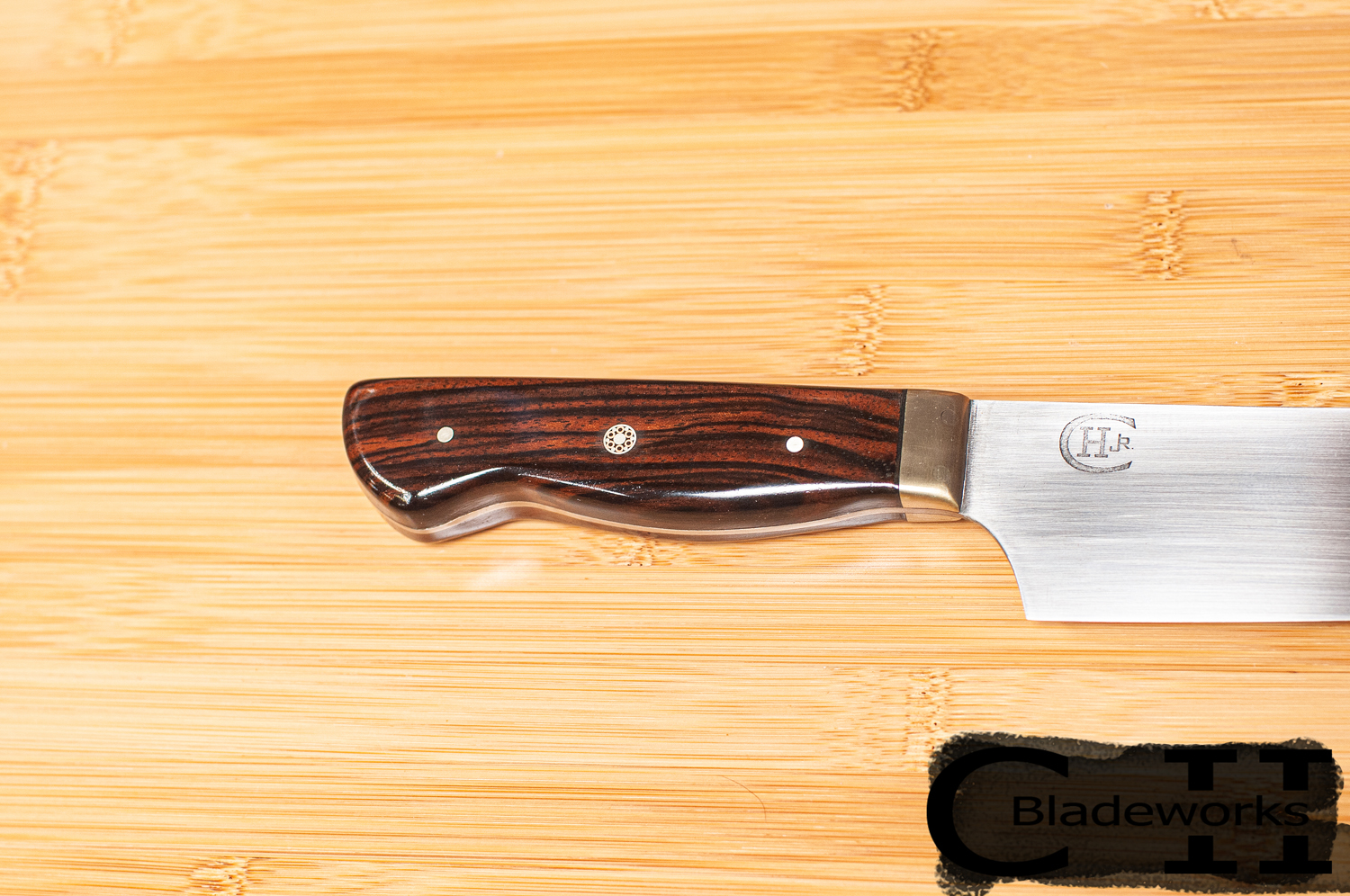So this is mostly a post for the other makers out there having issues with making wa handles......but maybe my customers might like to see it too?
It's common for most (wa) handle makers today to use a dowel internally to provide stability/security while shaping the handle (off knife). This is sort of like making a dowel to work like (what we get from) a tang when shaping a handle while it's mounted on the knife. This is especially important to a maker when metal spacers are involved in the build as they tend to hold onto heat and melt the epoxy allowing the handle to come apart but when a dowel is used this problem pretty much isn't an issue.
Using dowels internally does add a lot of strength for to a handle, for sure, but I don't believe it's necessary for kitchen knives since they're not used in a manner that requires such characteristics like say a camp knife would require (chopping, etc). I only use dowels for the reasons noted.
I first used a single dowel in my wa handles, like most other makers employ, but I found this limiting and looked for another method. The reasons for this...
1. When a single (large) hole is drilled it's difficult to keep the hole running straight as the depth increases.
2. Bigger drill bits cost more money and are harder to find. The same is true for dowels.
3. The size of the hole/dowel limits the size/shape that the finished handle can be brought to. Using a large internal hole/dowel often meant wider handles than I wanted to provide, especially the case on small petty handles.
4. When making handles for several different size knives one needs to make different sized handles, this means many different size dowels and drill bits to keep on hand. With the double dowel method I can use one size drill and dowel for all handles.
This is my construction method for wa handles. Thoughts?

It's common for most (wa) handle makers today to use a dowel internally to provide stability/security while shaping the handle (off knife). This is sort of like making a dowel to work like (what we get from) a tang when shaping a handle while it's mounted on the knife. This is especially important to a maker when metal spacers are involved in the build as they tend to hold onto heat and melt the epoxy allowing the handle to come apart but when a dowel is used this problem pretty much isn't an issue.
Using dowels internally does add a lot of strength for to a handle, for sure, but I don't believe it's necessary for kitchen knives since they're not used in a manner that requires such characteristics like say a camp knife would require (chopping, etc). I only use dowels for the reasons noted.
I first used a single dowel in my wa handles, like most other makers employ, but I found this limiting and looked for another method. The reasons for this...
1. When a single (large) hole is drilled it's difficult to keep the hole running straight as the depth increases.
2. Bigger drill bits cost more money and are harder to find. The same is true for dowels.
3. The size of the hole/dowel limits the size/shape that the finished handle can be brought to. Using a large internal hole/dowel often meant wider handles than I wanted to provide, especially the case on small petty handles.
4. When making handles for several different size knives one needs to make different sized handles, this means many different size dowels and drill bits to keep on hand. With the double dowel method I can use one size drill and dowel for all handles.
This is my construction method for wa handles. Thoughts?

Last edited:








